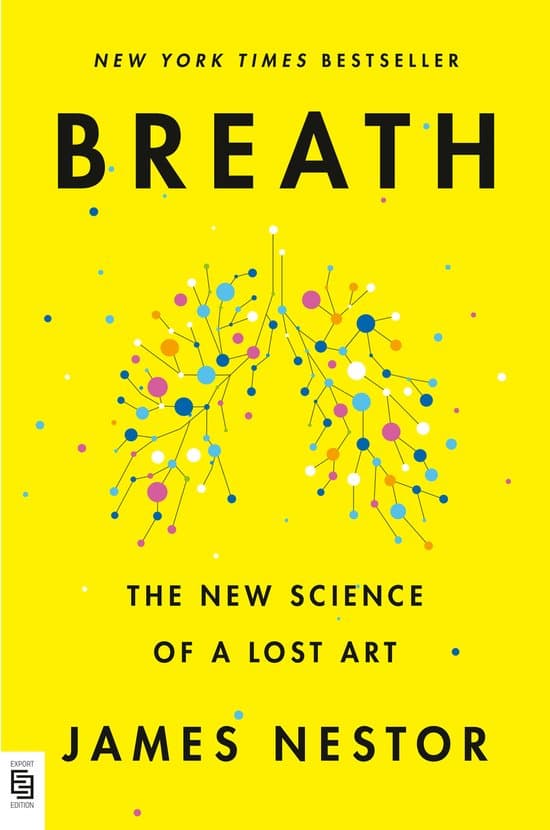
Breath: The New Science of a Lost Art
Rate this book
Dive into the transformative world of "Breath" by James Nestor, where the simple act of breathing is unraveled as the key to unlocking your full potential. This groundbreaking exploration seamlessly merges cutting-edge science with ancient wisdom, revealing how the overlooked art of breathing can enhance health, performance, and longevity. Nestor's captivating narrative style and meticulous research guide you on an exhilarating journey through time, turning a mundane habit into a powerful tool for personal transformation. Discover the breath of life anew—prepare to be inspired, challenged, and forever changed by the air you breathe.
About the author
James Nestor
1 books · 0 followers
James Nestor is a journalist and author renowned for his deep exploration of the human body and its capabilities, particularly through his New York Times bestseller "Breath: The New Science of a Lost Art." His work delves into the science of breathing, showcasing its transformative effects on health and performance. Nestor's unique research approach, combining immersive personal experiences with scientific inquiry, has earned him accolades, including the Best General Nonfiction Award at the 2020 National Outdoor Book Awards.
Popular quotes (10)
View all quotes →"Nothing about this place had changed. The threadbare Persian rug. The paint-chipped window that rattles in the breeze. The rumble of diesel trucks chugging up Page Street and the jaundiced streetlight illuminating bits of falling lint. A few of the faces are the same, too: there's the guy with priso..."
"Things seemed to be going so well in the region, until around 2000 BCE, when a drought hit, causing much of the population to disperse. Then Aryans from the northwest moved in. These weren't the blond-haired, blue-eyed soldiers of Nazi lore but black-haired barbarians from Iran. The Aryans took the ..."
""Nature is simple but subtle." This premise can be applied to life on the planet today. The more oxygen life can consume, the more electron excitability it gains, the more animated it becomes. When living matter is bristling and able to absorb and transfer electrons in a controlled way, it remains h..."
"After several rounds of deep breaths to open my rib cage, Martin asked me to start counting from one to ten over and over with every exhale. "1, 2, 3, 4, 5, 6, 7, 8, 9, 10; 1, 2, 3, 4, 5, 6, 7, 8, 9, 10 - then keep repeating it," she said. At the end of the exhale, when I was so out of breath I coul..."
"This was the Indus-Sarasvati civilization, named after the two rivers that flowed through the valley. The Indus-Sarasvati was the largest geographically—some 300,000 square miles—and one of the most advanced of ancient human civilizations. As far as is known, the Indus Valley had no churches or temp..."
"Breathing this way wasn't necessary," Martin told me. "Our bodies can survive on short and clipped breaths for decades, and many of us do. That doesn't mean it's good for us. Over time, shallow breathing will limit the range of our diaphragms and lung capacity and can lead to the high-shouldered, ch..."
"Once a day, they we're to lie down, take a brief inhale, and then exhale to a count of 6. As they progressed, they could inhale to a count of 4 and exhale to 8, with the goal of reaching a half-minute exhale after six months of practice."
"Rama revealed some of his secrets of prana control in group lessons and videos. He recommended students begin by harmonizing their breathing, by removing the pause between inhalations and exhalations so that every breath was one line connected with no end. When this practice felt comfortable, he ins..."
"Even more confounding are the monks of both Bön and Buddhist traditions, who practice a mellower version of Tummo that stimulates the opposite physiological response. These monks don't huff and puff. Instead, they sit cross-legged and breathe slow and less, inducing a state of extreme relaxation and..."
"Feinstein and a group of neurosurgeons, psychologists, and research assistants set up an experiment at a laboratory at the University of Iowa hospital. They brought S. M. in and sat her down at a desk, fitting an inhaler mask over her face, connected to an inhaler bag that contained a few lungfuls o..."